The Gods of Eden – Chapter 15: Mohammed
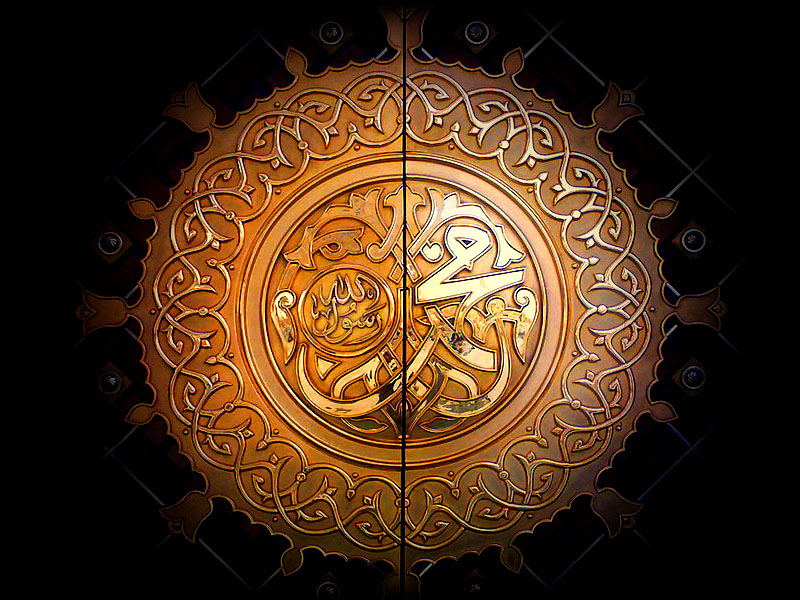
MUHAMMAD WAS BORN circa 570 A.D.
(/moʊˈhɑːməd/; Arabic: مُحَمَّد, romanized: Muḥammad [mʊˈħæm.mæd]; c. 570 – 8 June 632 CE) was an Arab religious, social, and political leader and the founder of Islam. According to Islamic doctrine, he was a prophet divinely inspired to preach and confirm the monotheistic teachings of Adam, Abraham, Moses, Jesus, and other prophets. He is believed to be the Seal of the Prophets within Islam, with the Quran as well as his teachings and practices forming the basis for Islamic religious belief.
AS with Jesus, there are gaping holes in the life history of Muhammad, especially in regard to his childhood and early adulthood.
To fill in the gaps, some historians hypothesize that Muhammad was an orphan who had been shunted about among relatives during his youth.
The Zombie-Like Lives of Sheeple from Birth to Death – Library of Rickandria
It is known that at age 25 he married a wealthy widow, and some biographers believe that he worked as a tradesman in her business for the next fifteen years, although that is not entirely certain.
At age 40, Muhammad suddenly emerged as a religious prophet and the leader of a powerful new religious movement.
Is Religion a Force for Good or Evil? – Library of Rickandria
According to Muhammad’s own statements, his religious mission was triggered by an apparition.
The Horrible Truth About Religion – Library of Rickandria
The vision occurred outside a secluded cave to which Muhammad would frequently retire for prayer and contemplation.
The apparition was an “angel” bearing a message for Muhammad to spread.
The Truth About Angels – Library of Rickandria
This was not just any angel, however.
Where “Angel” Was Stolen From – Library of Rickandria
It called itself Gabriel—one of the most important of the Christian angels.

In the Abrahamic religions (Judaism, Christianity, Islam and the Baháʼí Faith), Gabriel (/ˈɡeɪbriəl/ GAY-bree-əl) is an archangel with the power to announce God’s will to mankind. He is mentioned in the Hebrew Bible, the New Testament, the Quran and the Kitáb-i-Aqdas. Many Christian traditions – including Eastern Orthodoxy, Catholicism, Lutheranism, and Anglicanism – revere Gabriel as a saint.
Muhammad described the meeting in these words:
The Koran [the holy book of Islam] is no other than a revelation revealed to him. *
One terrible in power taught it to him, endued with wisdom.
With even balance stood He in the highest part of the horizon.
Then He came nearer and approached, and was at a distance of two bows, or even closer—and he revealed to His servant what He revealed.
The Koran repeats the story:
That this is the word of an illustrious Messenger, endued with power, having influence with the Lord of the Throne, obeyed there by Angels, faithful to his trust, and your compatriot is not one possessed by jinn [spirits]; for he saw him in the clear horizon.
Muhammad was either semiconscious or in a trance when the angel Gabriel ordered him to “Recite!” and record the message that the angel was about to give him.
The angel’s command to Muhammad was much like the commands given earlier in history to Ezekiel of the Old Testament and to “John” of the Book of Revelation by similar Custodial personnel.
Exposing the Old Testament – Library of Rickandria
When Muhammad awoke, it seemed to him that the angel’s words were “inscribed upon his [Muhammad’s] heart.”
This is significant, for it suggests that Muhammad, like Ezekiel, John, and perhaps even Constantine, had been drugged and mentally tampered with so that the message would be more firmly implanted in his mind.
The message given to Muhammad was a new religion called “Islam,” which means “Surrender.”
Followers must “surrender” to God.
Who Created God If God Created Everything? – Library of Rickandria
Members of Muhammad’s faith are therefore called “Moslems,” which comes from the word “Muslim” (“one who submits”).
Moslem vs. Muslim: What’s the Difference? – Writing Explained
Islam was one more Custodial religion designed to instill abject obedience in humans.
The Real Truth: Jews Promote Christianity & Islam – Library of Rickandria
The Supreme Being of the Islam faith is named “Allah,” who was said by Muhammad to be the same God as the Jewish and Christian Jehovah.
YHVH: The Truth About “Yahweh/Jehovah” – Library of Rickandria
Two key themes of the Koran are its Day of Judgment prophecy and its “fire and brimstone” depiction of Hell.
Death, the Afterlife & Hell – Library of Rickandria
Muhammad honored Moses and Jesus as Allah’s two previous messengers and proclaimed Islam to be the third and final revelation from God.
It was therefore the duty of all Jews and Christians to convert to Islam.
Christian Program & Purpose – Library of Rickandria
Hebrews and Christians tended to be less than cooperative with Muhammad’s demand.
Exposing Christianity – Library of Rickandria
After all, they had been warned in their own apocalyptic writings about the dangers of “false prophets.”
The result has been some of the bloodiest fighting in world history.
A Study of History by Miles Mathis – Library of Rickandria
Like so many Custodial religions before it, Islam did not allow people the luxury of choosing whether or not to become adherents.
Muhammad embarked on a program of conquest to make it clear which way the choice was to go.
Using the tactics of a generalissimo, the “divinely inspired” Muhammad raised an army and set off to convert ”unfaithful ones” (“infidels”) to his faith.
Muhammad’s apocalyptic army cut a wide bloody swath through most of the Middle East, including important Christian centers.
Middle East Exopolitical Saga – Library of Rickandria
The militant Moslem empire eventually stretched as far east as India where elements of Islam were incorporated into the Hindu religion.
Untold lives were lost during the Islamic conquests because the Islamic armies were prone to commit fearsome genocides as part of their mission to bring Utopia to mankind.
Genocide IS & Always Has Been a Jewish Ideal – Library of Rickandria
To most “infidel” Christians, Muslims were nothing more than savage “heathens” (“nonbelievers”).
This set up an inevitable conflict into which millions of people would be dragged.
Five hundred years after the death of Muhammad, the Christian world launched a coordinated military effort to force the Muslims out of the Holy Land.
Murderers, Thieves & Liars: Christianity has Nothing of its Own – Library of Rickandria
That effort is known as the Crusades.
Philip III the Bold & the Crusades – Library of Rickandria
The Christian Crusades to free Palestine from the Muslims took place between 1099 and 1270 A.D.
Skirmishes and minor battles between Christians and Muslims had broken out beforehand, but it was a call-to-arms by Pope Urban II in 1095 that finally turned those skirmishes into an organized war effort involving nearly every Christian ruler of Europe.

Pope Urban II (Latin: Urbanus II; c. 1035 – 29 July 1099), otherwise known as Odo of Châtillon or Otho de Lagery, was the head of the Catholic Church and ruler of the Papal States from 12 March 1088 to his death. He is best known for convening the Council of Clermont which ignited the series of Christian conquests known as the Crusades.
Hundreds of thousands of Christians enlisted in the Crusades after being promised:
- religious blessings
- fiefdoms
- spoils of conquest
Volunteers came from nearly every social class.
For many serfs and peasants, the Papal call-to-arms represented a way to escape feudal lords and perhaps to return as wealthy heroes.
The Crusades got off to a good, but bloody, start.
The Christians captured Jerusalem in the summer of 1099.
New Jerusalem: Jesus of Borg – Library of Rickandria
Although the knights and peasants who marched under Christian banners were extolled to practice high virtues and chivalry, they frequently degenerated into butchery and other acts of viciousness.
When the Crusaders took Jerusalem in 1099, they murdered many of the non-Christian survivors in a slaughter that claimed the lives of more than 10,000 victims.
Not only were the Crusaders killing Muslims, but they were also killing Jews, who were considered by many Christians to be as heathen as the Muslims.
Exposing the Jews – Library of Rickandria
The slaughter of Jews began even before the first Crusade to the Holy Land.
Relentless Problems with the Jews Go Back for Thousands of Years – Library of Rickandria
In the year 1095, Christian factions started murdering Jews in Europe.
A genocidal wave in the German Rhineland was the first major episode; it was sparked by unsubstantiated rumors that Rhineland Jews were using Christian children in their religious sacrifices.
The Disgusting Truth: Ritual Murder Is the Core of Judaism & Christianity – Library of Rickandria
Obliterating the Jews became an important element of the Crusades, and the massacres continued even after the Crusades to Jerusalem had ended.
The Crusades had another important effect on Europe.
Several decades before the launching of the First Crusade, Pope Gregory VII had attempted to put the Roman Catholic Church under greater centralized control.
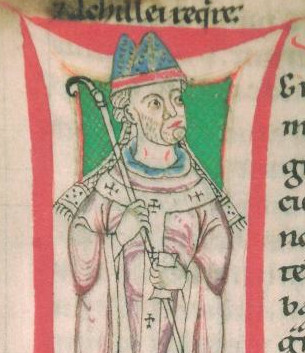
Pope Gregory VII (Latin: Gregorius VII; c. 1015 – 25 May 1085), born Hildebrand of Sovana (Italian: Ildebrando di Soana), was head of the Catholic Church and ruler of the Papal States from 22 April 1073 to his death in 1085. He is venerated as a saint in the Catholic Church.
Prior to Gregory’s effort, the Catholic Church in Europe was a loosely knit organization run primarily by non-clergymen; the type of organization envisioned by Christianity’s earliest founders.
The Dark History of the Vatican – Library of Rickandria
After Pope Urban II ascended to the Papacy and rallied all good Christians to fight the unholy Muslims, Christian princes and supporters began pledging allegiance directly to the Pope, thereby hastening the centralization effort attempted earlier by Pope Gregory VII.
The power of the Roman Papacy increased as the holy wars dragged on, and growing numbers of people proclaimed their Papal loyalty.
Behind the Crusades lay the Brotherhood.
Brotherhoods & Secret Societies – Library of Rickandria
The Christian Crusaders were led primarily by two powerful knight organizations with intimate Brotherhood ties:
the Knights Hospitaller and the Knights of the Temple (“Knights Templar”).
KNIGHTS TEMPLAR – Library of Rickandria
The “Knights Hospitaller” were so named because they operated a hospital in Jerusalem to help pilgrims in distress.
The Hospitallers began operations in the year 1048 as a charitable order.

Their purpose was aid and comfort.
When the first Crusaders successfully captured the Holy City, the Hospitallers began to receive generous financial support from the wealthier Crusaders.
In the year 1118, seventy years after their founding, the Knights Hospitaler underwent a change of leadership and purpose.
They were made into a military order dedicated to fighting the Muslims who were continually trying to recapture Jerusalem.
With this change of purpose came a change in name; the Hospitallers were variously called the “Order of Knights Hospitaler of St. John,” “Knights of St. John of Jerusalem,” or simply, “Knights of St. John.”
The Hospitallers had named themselves after John, son of the King of Cyprus.
John had gone to Jerusalem to aid Christian pilgrims and knights.
There is some doubt as to whether the Hospitallers were founded as a Brotherhood organization.
They reportedly did not function as one at the outset.
However, they soon became affiliated with the Brotherhood network by adopting Brotherhood traditions and titles.
They became ruled by a Grand Master and developed secret rites and rituals.
By 1119, one year after the Hospitallers had become a fighting order, the Templar Knights were in existence.
Masons & Knights Templar – Library of Rickandria
The Templars originally called themselves the “Order of the Poor Knights of Christ” because they took solemn vows of poverty.
Their name was later changed to “Knights of the Temple” after they were housed near the site where Solomon’s temple had once stood.
The Temple of Solomon – Library of Rickandria
Although the Templars and Hospitallers had a common enemy in the Muslims, the two Christian organizations became bitter rivals.
The Templar Knights began their existence as a branch of the Brotherhood.
They practiced a deep mystical tradition and used many Brotherhood titles, notably “Grand Master.”
Like the Hospitaler Knights, the Templars received large sums of money from well-to-do Christian crusaders.
The Templars thereby became enormously wealthy and were able to transform themselves into an international banking house during the twelfth and thirteenth centuries.
The Templars loaned large sums of money to European:
- kings
- princes
- merchants
and to at least one Muslim ruler.
Most of the Templars’ riches were stored in strong rooms in their Paris and London temples, causing those cities to become leading financial centers.
After the fall of Jerusalem and the final victory of the Muslims in 1291, the fortunes of both knightly orders changed.
The Knights of St. John (Hospitallers) were forced to flee the Holy Land.
They took up residence on a succession of islands during the ensuing centuries.
With the changes of location came changes in name.
They became the “Knights of Rhodes” after moving to the island of Rhodes.
They were the “Knights of Malta” when they moved to that island and ruled it.
While on Malta, the Knights became a major military and naval power in the Mediterranean until their defeat in 1789 by Napoleon.
Was Napoleon Jewish? – Library of Rickandria
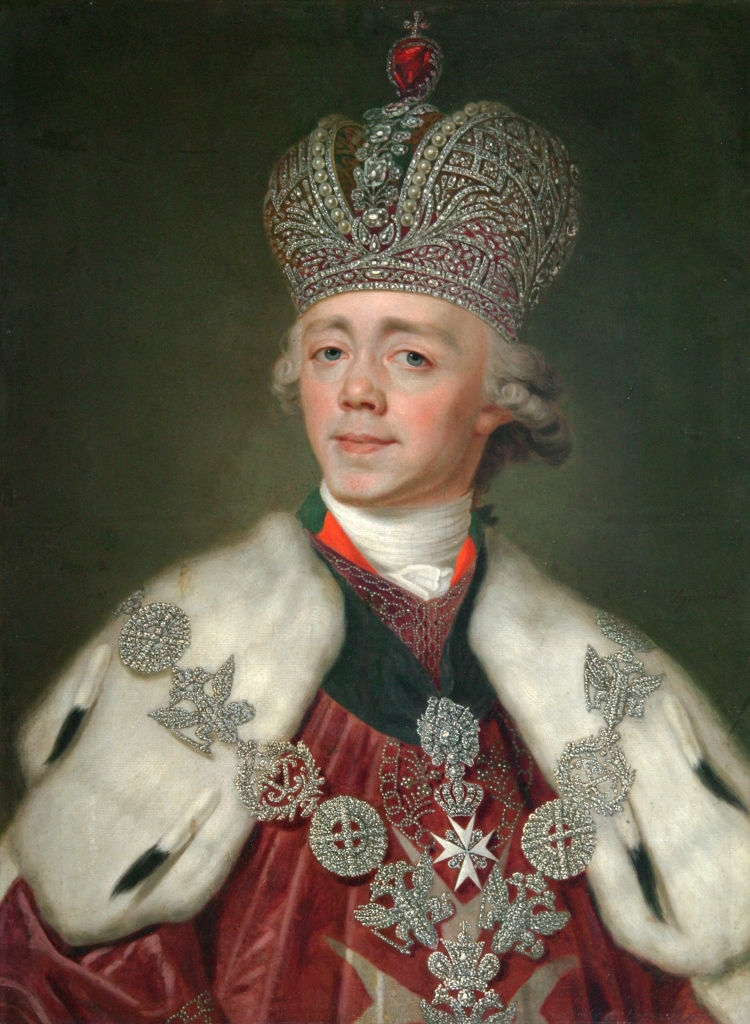
Paul I (Russian: Па́вел I Петро́вич, romanized: Pavel I Petrovich; 1 October [O.S. 20 September] 1754 – 23 March [O.S. 11 March] 1801) was Emperor of Russia from 1796 until his 1801 assassination. Paul remained overshadowed by his mother, Catherine the Great, for most of his life. He adopted the laws of succession to the Russian throne—rules that lasted until the end of the Romanov dynasty and of the Russian Empire. He also intervened in the French Revolutionary Wars and toward the end of his reign, added Kartli and Kakheti in Eastern Georgia into the empire, which was confirmed by his son and successor Alexander I. He was de facto Grand Master of the Knights Hospitaller from 1799 to 1801 and ordered the construction of a number of priories of the Order of Malta. Paul’s pro-German sentiments and unpredictable behavior made him unpopular among the Russian nobility, and he was secretly assassinated by his own officers.
After enjoying temporary protection under Russian Emperor Paul I, the Knights of Malta had their headquarters moved to Rome in 1834 by Pope Leo XIII.
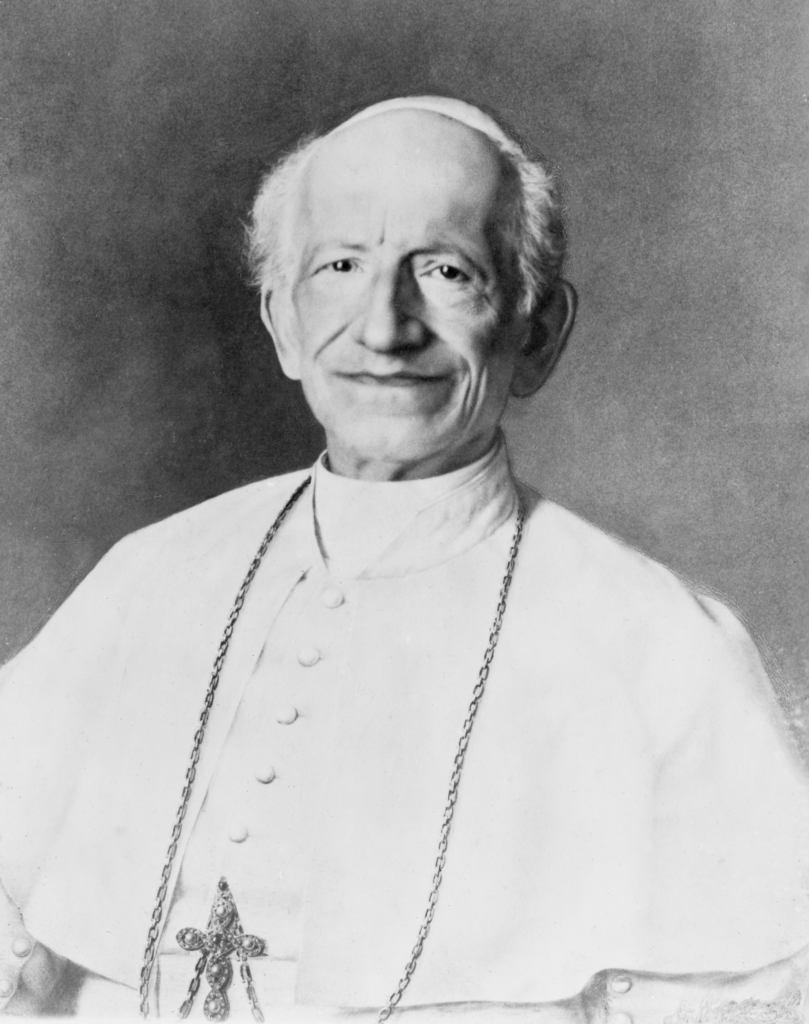
Pope Leo XIII (Italian: Leone XIII; born Gioacchino Vincenzo Raffaele Luigi Pecci;[b] 2 March 1810 – 20 July 1903) was head of the Catholic Church from 20 February 1878 until his death in July 1903. Living until the age of 93, he was the oldest pope, whose age can be validated, holding office and had the fourth-longest reign of any pope, behind those of St. Peter, Bl. Pius IX (his immediate predecessor) and St. John Paul II.
Today they are known as the “Sovereign and Military Order of Malta” (SMOM) and have the unusual distinction of being the world’s smallest nation.
Sovereign Military Order of Malta – Library of Rickandria
Located in a walled enclave in central Rome, SMOM still retains its status as a sovereign state, although new Grand Masters of the Order must be approved by the Pope.
SMOM runs:
- hospitals
- clinics
- leper colonies
throughout the world.
It also gives active assistance to anti-Communist causes and is surprisingly influential in political, business, and intelligence circles today despite its small size. **
The Templar Knights did not fare as well as the Hospitallers after the Crusades.
They were forced to flee with the Hospitallers to the island of Cyprus, whereupon the Templars split up and returned to their many Templar houses (“preceptories”) in Europe.
The Templars came under heavy criticism for their failure to save the Holy Land and rumors circulated that they engaged in heresy and immorality.
Accusations were made that the Templars spat on the cross during their initiations and forced members to engage in homosexual acts.
Jewish Control of Gay Rights – Library of Rickandria
By 1307, the Templar controversy had become so strong that Philip IV the Fair of France ordered the arrest of all Templars within his dominion and used torture to extract confessions.
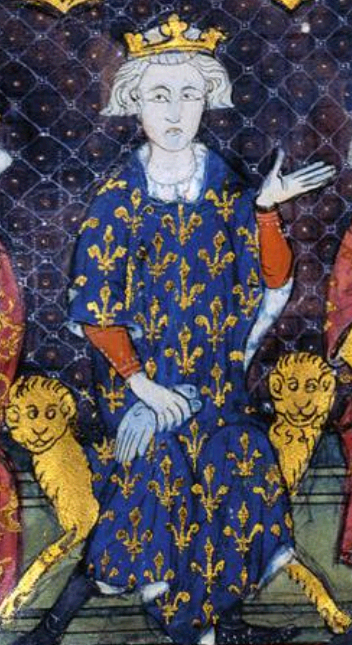
Philip IV (April–June 1268 – 29 November 1314), called Philip the Fair (French: Philippe le Bel), was King of France from 1285 to 1314. By virtue of his marriage with Joan I of Navarre, he was also King of Navarre as Philip I from 1284 to 1305, as well as Count of Champagne. Although Philip was known to be handsome, hence the epithet le Bel, his rigid, autocratic, imposing, and inflexible personality gained him (from friend and foe alike) other nicknames, such as the Iron King (French: le Roi de fer). His fierce opponent Bernard Saisset, bishop of Pamiers, said of him: “He is neither man nor beast. He is a statue.”
Five years later, the Pope dissolved the Templar Order by Papal decree.
Many Templars were executed, including Grand Master Jacques de Molay, who was publicly burned at the stake on March 11, 1314, in front of the cathedral of Notre Dame in Paris.
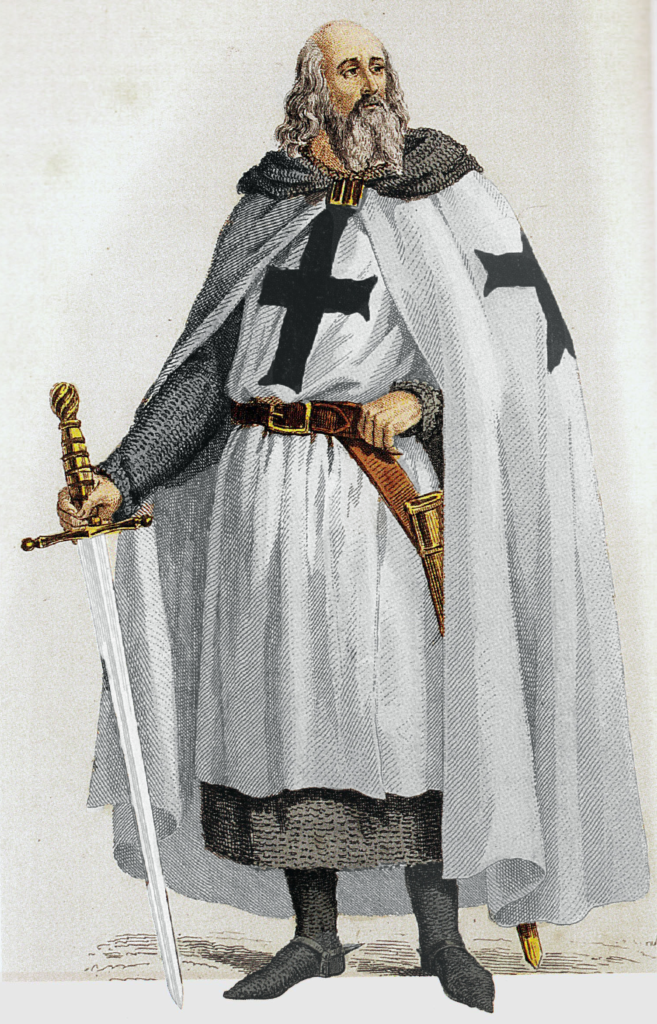
Jacques de Molay (French: [də mɔlɛ]; c. 1240–1250[1] – 11 or 18 March 1314), also spelled “Molai”, was the 23rd and last grand master of the Knights Templar, leading the order sometime before 20 April 1292 until it was dissolved by order of Pope Clement V in 1312. Though little is known of his actual life and deeds except for his last years as Grand Master, he is one of the best-known Templars.
Nearly all Templar properties were confiscated and turned over to the Hospitaller Knights.
The long and intense rivalry between the Hospitallers and Templars had finally come to an end.
The Hospitallers emerged as the victors.
The Hospitallers’ victory could not have occurred at a more fortuitous time for there had been serious discussion within Papal circles about merging the two orders—a plan which would have been completely unacceptable to both.
Despite the downfall of the Templar Knights, the organization managed to survive.
According to Freemasonic historian, Albert MacKey, the Knights Templar were given a home in Portugal by King Denis after their banishment from the rest of Catholic Europe.
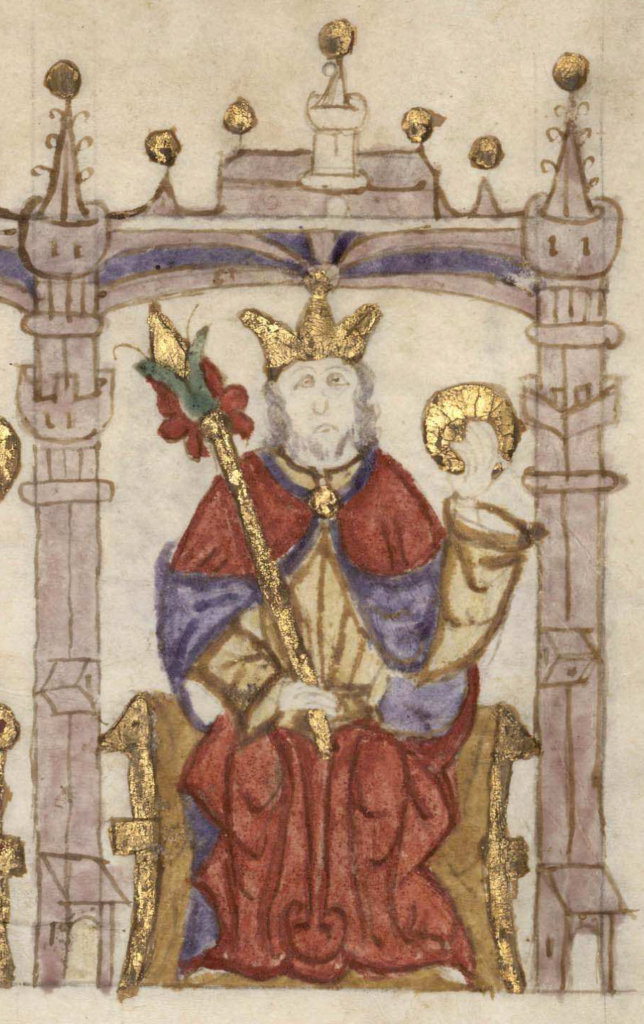
Denis (Latin: Dionysius, Portuguese: Dinis or Diniz, IPA: [diˈniʃ]; 9 October 1261 – 7 January 1325), called the Farmer King (Rei Lavrador) and the Poet King (Rei Poeta), was King of Portugal. The eldest son of Afonso III of Portugal by his second wife, Beatrice of Castile, and grandson of Afonso II of Portugal, Denis succeeded his father in 1279. He was married to Elizabeth of Aragon, who was later canonised as a saint of the Roman Catholic Church.
In Portugal, the Templars were granted their usual rights and privileges, they wore the same costumes, and they were governed by the same rules they had before.
The decree which re-established the Templars in Portugal stated that they were in that country to be rehabilitated.
Pope Clement V approved the rehabilitation plan and issued a bull (official proclamation) commanding that the Templars change their name to “Knights of Christ.”
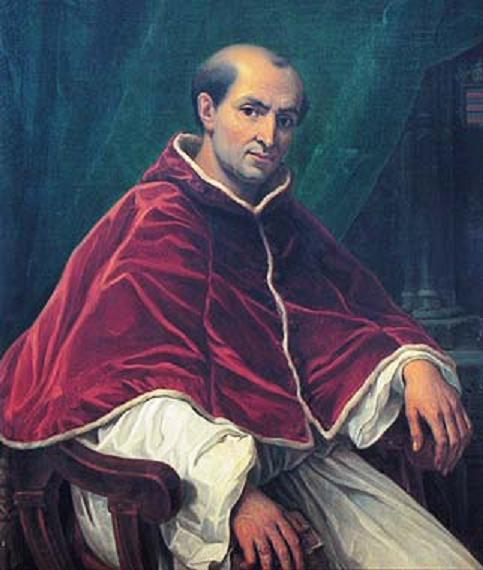
Pope Clement V (Latin: Clemens Quintus; c. 1264 – 20 April 1314), born Raymond Bertrand de Got (also occasionally spelled de Guoth and de Goth), was head of the Catholic Church and ruler of the Papal States from 5 June 1305 to his death, in April 1314. He is remembered for suppressing the order of the Knights Templar and allowing the execution of many of its members. Clement moved the Papacy from Rome to Avignon, ushering in the period known as the Avignon Papacy.
The Templars, or “Knights of Christ,” also changed the cross on their uniform from the eight-pointed Maltese cross to the official Latin cross.
The Templars became quite powerful in their new home.
In 1420, King John I gave the Knights of Christ control of Portuguese possessions in the Indies.
Subsequent Portuguese monarchs expanded the Knights’ proprietorship to any new countries which the Knights might discover.
The Knights of Christ became so powerful, reports Albert MacKey, that several Portuguese kings felt compelled to curtail the Knights’ influence by taking over the Grand Master position.
The Knights of Christ survived under Portuguese sponsorship until well into the eighteenth century, at which time the Templar name re-emerged and took on renewed importance in the stormy political affairs of Europe, as we shall see later.
There was a third Christian knight organization during the Crusades worth mentioning:
the Teutonic Knights.
WOODY ALLEN & the Teutonic Knights – Library of Rickandria
The Teutonic Knights were originally called the “Order of the Knights of the Hospital of St. Mary of the Teutons in Jerusalem.”
Like the Hospitallers, the Teutonic Knights started as a charitable order.
They operated a hospital in Jerusalem to aid Christians making pilgrimages to the Holy Land.
In March 1198, the Teutonic Knights were given the rank of an order of knights, which made them into a fighting order.
Like the Templars, the Teutonic Knights lived a semi monastic lifestyle, practiced initiation rites, and were ruled by a Grand Master.
The Teutonic Knights permitted only Teutons [Germans] to become members.
They also feuded a great deal with the Hospitallers and Templars.
During the Crusades when Brotherhood military organizations were valiantly leading Christian armies to fight the Muslims, other groups in the Brotherhood network were rallying Muslims to battle the Christians!
Philip III the Bold & the Crusades – Library of Rickandria
Of the several Brotherhood branches promoting the cause of Islam, one is of particular interest to us:
the sect of the Assassins.
Secrets of the Assassins – Library of Rickandria
Muhammad died in 632 A.D. A struggle immediately ensued over who was to become his successor.
This caused the Islamic religion to break apart into competing sects, each having its own ideas about who was to succeed Muhammad.
One such Islamic faction was the “Shia” sect, which adhered to a strong “End of the World ” tradition.
Shiites believed in the “Millennium”:
a Day of Judgment followed by a thousand years of peace and spiritual salvation.
Eventually the Shia sect itself split apart.
One faction to emerge from the Shia split was the Ismaili sect, which gave birth to the Assassins.
The Ismailians broke away from the other Shiites in the eighth century.
The Ismaili sect was a Brotherhood secret society with a lodge system similar to Freemasonry and to other Brotherhood organizations.
The Ismaili Grand Lodge was situated in Cairo where it practiced step-by-step initiations with all of the attendant symbols and mysteries.
Led by a Grand Master, the Ismailians promulgated a very strong apocalyptic message complete with the promise of a coming Messiah.
One Ismaili lodge member was a man named Hasan-i Sabbah.

Hasan-i Sabbah[a] (Persian: حسن صباح, romanized: Ḥāsān-e Śaḇaḥ; c. 1050 – 12 June 1124), also known as Hasan I of Alamut, was a religious and military leader, founder of the Nizari Ismai’li sect widely known as the Hashshashin or the Order of Assassins, as well as the Nizari Ismaili state, ruling from 1090 to 1124 AD.
Mr. Sabbah’s mystical conversion came about as the result of a “severe and dangerous illness” during which he believed that God had purged him and had given him a spiritual rebirth.
In 1078, at the Grand Lodge in Cairo, Mr. Sabbah asked the Ismaili caliph *** for permission to spread the Ismaili gospel in Persia.
The caliph granted Mr. Sabbah’s request on the condition that Sabbah agree to support the caliph’s eldest son, Nizar, as the next (ninth) caliph.
Sabbah accepted the deal and named his new Ismaili branch the “Nizaris” after the caliph’s son.
It was not long, however, before Mr. Sabbah’s branch became known by its more famous name:
the “Assassins.”
The Assassins are usually referred to as a religious sect.
They were, more accurately, a secret society.
According to Masonic historian Albert MacKey, the Assassins adopted the organizational structure of the Ismailians.
The Assassins practiced step-by-step initiations and possessed a secret mystical doctrine.
Mr. MacKey adds that the Assassins appear to have practiced three of the very same fraternal degrees used in Freemasonry today:
- Apprentice
- Fellow
- Master
The Assassins had a religious code similar to the Hospitaller and Teutonic Knights.
The Assassins were an integral part of the Brotherhood network.
A distinguishing feature of the Assassin organization was its use of drugs, primarily hashish, for mystical and other purposes.
In fact, the word “assassin” comes from the word “hashshishin,” which means “users of hashish.”
The Assassins and several other Brotherhood groups in history extolled the virtues of mind-altering Pharmaceuticals as a way to achieve mystical enlightenment.
The Assassins were also a fighting organization with an army.
Grand Master Sabbah chose a fortress located high in the northern mountains of Iran for the headquarters of his new group.
This Assassin fortress was known as “Alamut,” which means “Eagle’s Teaching” or “Eagle’s Nest.”
The Assassins became a formidable military and political power in the region and eventually controlled other fortresses in Persia and Syria.
The Assassins feuded with other Muslim organizations and fought against the Knights Templar and other Christian armies during the Crusades.
To help win its feuds and wars, the Assassins developed the deadly tool for which they became famous and feared:
the tool of the “lone assassin.”
How to Embrace Being a Lone Wolf & Walk Your OWN Path – Library of Rickandria
Most people today are painfully aware of the phenomenon of the so-called “lone assassin.”
This is usually a young man in his twenties or thirties who is driven by crazed delusions and who displays little or no concern for his own safety as he murders an important leader in broad daylight, in public, and in front of witnesses.
The killing has tremendous shock value, and it can greatly affect the political direction of a nation.
Many people believe that so-called “lone assassins” are products of our modern age.
It is quite amusing to read ponderous psychiatric tomes to that effect.
In truth, the “lone assassin” has been a political institution for over seven hundred years, if not longer.
Seven hundred years ago, however, no pretense was made that the “lone assassins” acted alone, as is done today.
Back then, the “lone assassin” was known to be an effective and terrifying tool of political and social control.
It was a technique used by the Assassin organization to win its wars, increase its political influence, destroy its enemies, and enlarge its coffers by extortion.
How did the Assassin sect get young men to commit the murders?
It is not easy to make people kill others, especially when the murderer is likely to be caught and slain himself.
The Assassin organization had an effective method for overcoming this natural resistance and programming young men to kill.
One of the earliest people to describe the Assassin programming technique was Marco Polo, the famous European traveler of the 13th century who wrote a bestselling book about his journies.
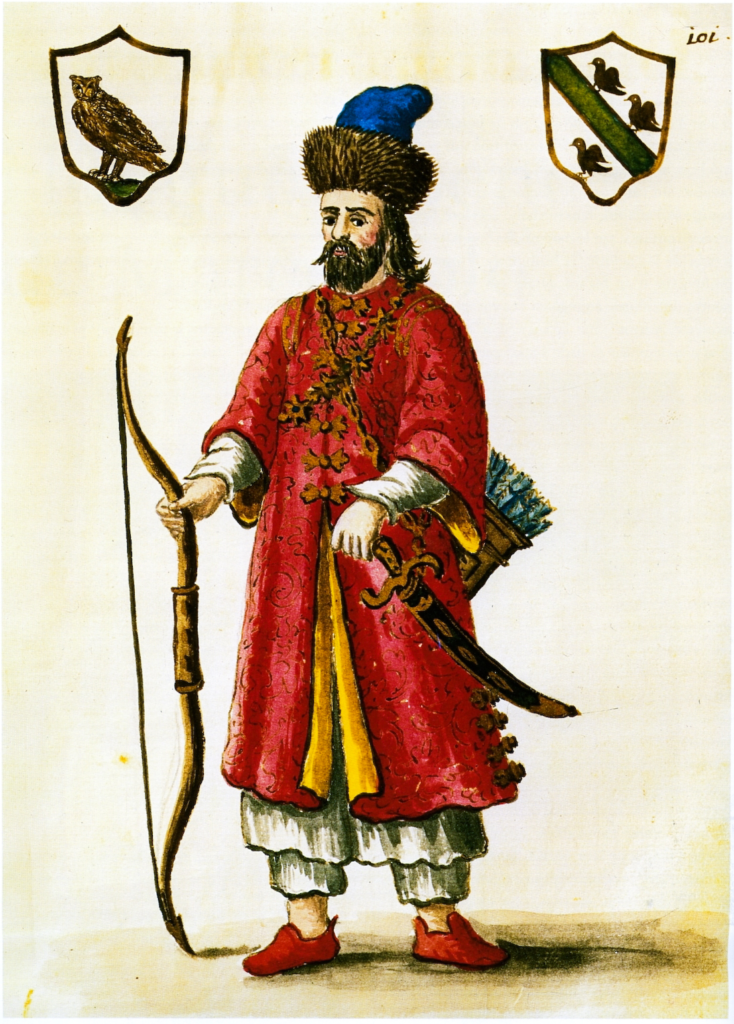
Marco Polo (/ˈmɑːrkoʊ ˈpoʊloʊ/ ⓘ, Venetian: [ˈmaɾko ˈpolo], Italian: [ˈmarko ˈpɔːlo] ⓘ; c. 1254 – 8 January 1324) was a Venetian merchant, explorer and writer who travelled through Asia along the Silk Road between 1271 and 1295. His travels are recorded in The Travels of Marco Polo (also known as Book of the Marvels of the World and Il Milione, c. 1300), a book that described the then-mysterious culture and inner workings of the Eastern world, including the wealth and great size of the Mongol Empire and China under the Yuan dynasty, giving Europeans their first comprehensive look into China, Persia, India, Japan, and other Asian societies.
Tartaria – Library of Rickandria
Although Mr. Polo was accused by a few people in his own time of fabricating stories, subsequent investigation has verified nearly everything he described in his famous book.
According to Mr. Polo, a portion of the Assassin fortress in Alamut had been converted into a beautiful secret garden fashioned after the paradise described in Muhammad’s visions of Heaven.
The garden grew almost every imaginable type of fruit and was watered with streams of:
- wine
- milk
- honey
The palaces were beautifully ornamented and had a company of:
- singers
- dancers
- musicians
If certain young men in the region showed promise as potential murderers, they were drugged, usually with opium or hashish, and taken to the secret garden.
There they were pampered for a few days and nothing was denied them, including women.
They were then drugged again and returned to their homes.
The young men believed that Assassin leaders had transported them to Heaven and back.
The “War in Heaven” – Library of Rickandria
Eager to return, the young men would gladly follow the instructions of their Assassin leaders.
The heaven-struck underlings were often told that a return to paradise lay in boldly assassinating a targeted enemy leader.
The young assassin was instructed to wait in a public place and strike down the victim with a dagger as the victim passed by.
Because the young assassins would often be killed on the spot or be later executed, they were made to believe that their death at the scene of the crime or by later execution would result in a return to the paradise they remembered.
The notoriety of the Assassins spread.
It was rumored that some European kings were paying tribute to the Assassins to avoid becoming targets.
Although the extent of Assassin activity in Europe is still debated today (some historians assert that the Assassins focused most of their deadly practices on the conflicts going on in the Middle East), the Assassins became famous far and wide.
As a result, all people who attempt the murder of a political leader have come to be known as “assassins,” or “users of hashish.”
Although most modern “assassins” have not been hashish users, many have shown evidence of considerable mental tampering, which will be discussed near the end of this book.
By the end of the 13th century, the Mongols had overrun the Middle East and had destroyed major Assassin strongholds.
Interestingly, the Mongols were also inspired by mystical beliefs.
The Assassins managed to survive the onslaught, and they exist today.
Modern Assassin sects are reported to be peaceably settled in:
- India
- Iran
- Syria
Their titular head is the “Aga Khan,” who is the spiritual leader of all Ismailians worldwide.
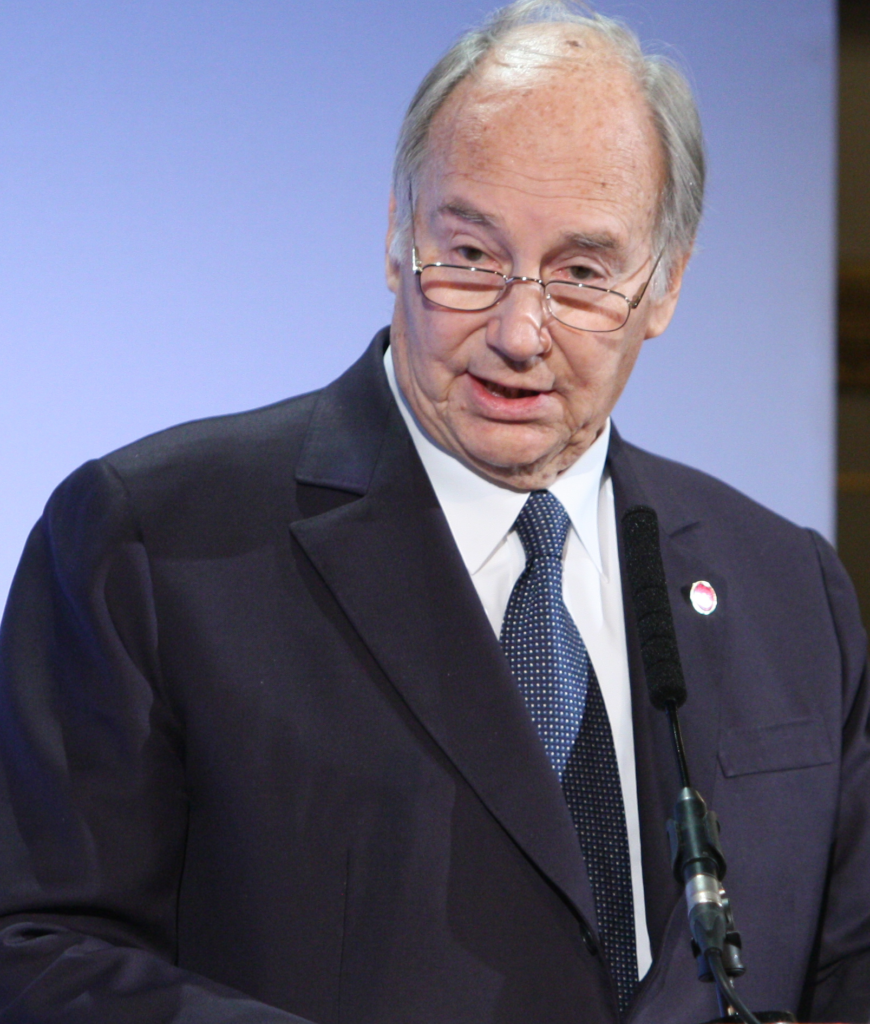
Aga Khan (Persian: آقاخان, Arabic: آغا خان; also transliterated as Aqa Khan and Agha Khan)[1] is a title held by the Imām of the Nizari Ismāʿīli Shias. Since 1957, the holder of the title has been the 49th Imām, Prince Shah Karim al-Husseini, Aga Khan IV (born 1936). Aga Khan claims to be a direct descendant of Muhammad, the last prophet according to the religion of Islam.
The Ismailians are estimated to number about 20 million people today.
As of 1840, the Aga Khans have been operating out of India because of an unsuccessful rebellion in 1838 of Aga Khan I against the Persian Shah.
When the rebellion failed, Britain offered sanctuary to the Aga Khan in India, which was then under British rule.
Since then, the Aga Khans have been traveling in elite circles of Western society.
Recent Aga Khans have received educations at:
- Oxford
- Harvard
- Switzerland
The Aga Khans have also gained a place in the international banking community through their establishment of a central bank in Damascus, Siria.
It may be a coincidence that “lone assassins” arose as an important phenomenon in the United States at just about the time that Aga Khan I was establishing a relationship with the British in the early 19th century.
The first known “lone assassin” to strike a U.S. President did so in 1835.
The intended victim was Andrew Jackson who was, interestingly, a member of a Knights Templar organization in America.
Since then, U.S. Presidents have been the targets of “lone assassins” every ten to twenty years.
European Royal Bloodline of the American Presidents – Library of Rickandria
THE HIDDEN KING(S): Camelot Ruled from the Cave of Merlin – Library of Rickandria
Lincoln’s Assassination was a Manufactured Event: Meaning it NEVER Happened – Library of Rickandria
Many other Western leaders and public figures have also been victims.
Although I have seen no evidence that the Assassin sect itself is behind modern “lone assassins” episodes, it is clear that their technique has been picked up and used by influential political sources with Brotherhood connections in the Western world, as I shall discuss more fully in a later chapter.
As we have seen, the Crusade era witnessed the birth of institutions which still affect us today.
To the list we can add two famous Christian Orders: the Franciscans and the Dominicans.
The Franciscans adopted the cord-at-the-loins outfit and bald spot used by ancient Egyptian Brotherhood priests at El Amarna.
The Franciscans appeared to be quite humane.
The Dominicans, on the other hand, were placed in charge of the most widely hated by-product of the Crusades:
the Catholic Inquisition.
The medieval Inquisition has been universally condemned as one of the most oppressive human institutions ever developed.
It was known for its tortures and zealous excesses.
The Inquisition arose out of an effort by Pope Innocent II to stamp out a large heretical sect in the south of France known as the “Albigensians.”
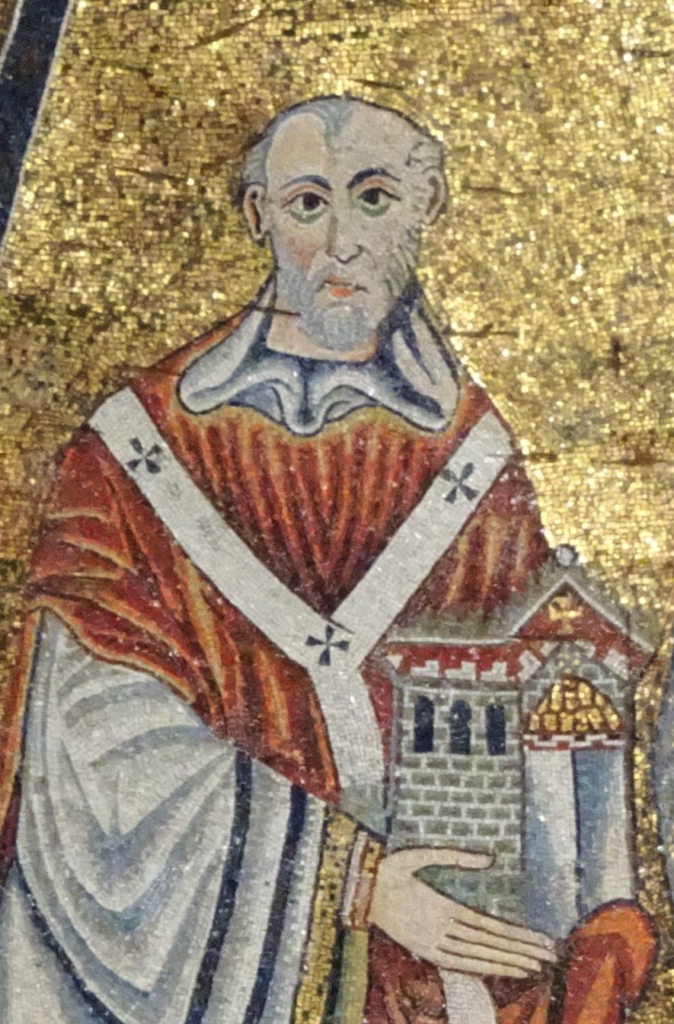
Pope Innocent II (Latin: Innocentius II; died 24 September 1143), born Gregorio Papareschi, was head of the Catholic Church and ruler of the Papal States from 14 February 1130 to his death in 1143. His election as pope was controversial and the first eight years of his reign were marked by a struggle for recognition against the supporters of Anacletus II. He reached an understanding with King Lothair III of Germany who supported him against Anacletus and whom he crowned as Holy Roman emperor. Innocent went on to preside over the Second Lateran council.
The Cathars – Library of Rickandria
Innocent II had called for a special Crusade in 1208 to enter France and wipe out the sect.
The five-year war which ensued devastated the region.
Ten years later, a new Pope, Gregory IX, continued the action.
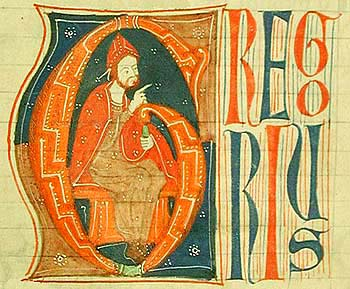
Pope Gregory IX (Latin: Gregorius IX; born Ugolino di Conti; 1145 – 22 August 1241) was head of the Catholic Church and the ruler of the Papal States from 19 March 1227 until his death in 1241. He is known for issuing the Decretales and instituting the Papal Inquisition, in response to the failures of the episcopal inquisitions established during the time of Pope Lucius III, by means of the papal bull Ad abolendam, issued in 1184. He worked initially as a cardinal, and after becoming the successor of Honorius III, he fully inherited the traditions of Gregory VII and of his own cousin Innocent III, and zealously continued their policy of papal supremacy.
He placed the Dominicans in charge of investigating the Albigensians.
Gregory gave the Dominican Order full legal power to name and condemn all surviving heretics.
Out of this campaign grew the full inhuman machinery of the Catholic Inquisition which sought to stamp out heresy of every type.
The Inquisition generated a fearful climate of intellectual and spiritual oppression in Europe for the next six hundred years.
Hearsay, innuendo, and honest intellectual disagreement led many decent people to the torture rack and auto-da-fe (death by burning).
The social scars are still visible today in the instinctive fear so many people have of expressing nonconforming ideas.
The Inquisition helped breed a social reaction of violence to nonconforming ideas that the world has not yet fully escaped.
It is clear that the Christian Church had undergone many changes by the time the Crusades ended.
The Church was no longer the humanitarian decentralized religion envisioned by Jesus.
The new Catholic (“Undivided”) Church headquartered in Rome had succumbed to the “reforms” of the East Roman emperors.
The Dark History of the Vatican – Library of Rickandria
It was a religion Jesus would have deplored.
Fortunately, after the demise of the Inquisition, the Catholic Church began to improve and it has many good qualities today.
Perhaps the most significant event of the Crusades does not involve the waging of war, the programming of assassins, or the creation of an Inquisition.
It entails the making of a peace.
In the year 1228, German emperor Frederick II led a Crusade to Jerusalem.
Frederick was not in good graces with the Pope at the time.
Frederick has been described as a,
“Strange secular-minded, highly educated prince, a sworn enemy of the papacy on political grounds, who had acquired by marriage the title to what was left of the kingdom of Jerusalem.” [1]
Frederick’s fight with Pope Gregory IX had begun only one year before his trip to Jerusalem.
The conflict between Frederick and Pope Gregory centered around the issue of centralized Papal power.
Frederick opposed it and Gregory was striving to hasten it.
This dispute caused Frederick to be put under sentence of excommunication—a sentence finally carried out in 1245.
While under the sentence, but not yet excommunicated, the unrepentant Frederick journeyed to his kingdom in Jerusalem at the head of his own crusade.
Despite a deep involvement with the Teutonic Knights, Frederick II proved on that trip that he could be a man of peace.
Instead of prolonging war with the Muslims, Frederick negotiated a peace treaty.
He apparently felt that it was in everyone’s best interests to end the religious strife, and that is precisely what he did.
Frederick accomplished this feat by negotiating with the reigning Muslim leader, Sultan Kamil.
Within a year of starting his talks with the Sultan, and without the approval of the Pope, Frederick concluded a treaty signed in 1229 that gave Jerusalem back to the Christians for ten years provided that the Christians did not arm themselves.
The arrangement worked.
Using negotiation and appeals to reason, Frederick had accomplished in one short trip what the Popes had claimed they were trying to do for almost 130 years with warfare and blood.
Under Frederick’s treaty, Christians were free to inhabit Jerusalem and make pilgrimages there, and the Muslims were freed from the threat posed by Christian armies.
Many Christian and Muslim leaders were not at all happy with this arrangement, however, for Frederick had set it up,
“Leaving both parties indignant at so peaceful a settlement.
When the truce finally ran out in 1239, the holy war was resumed …” [2] ****
We might legitimately ask, why was Frederick’s treaty not extended or a similar one negotiated?
What purpose was served by diving into seventy additional years of bloody warfare?
The Christians wound up losing the Holy Land altogether.
So often we hear that wars are a product of basic human nature, yet in one peace effort we saw 130 years of raging conflict end through the effort of one man appealing to the reason and cooperation of another man, resulting in a peace for the duration of the treaty.
We can see that the ability of people to have peace is as strong, if not stronger, than a desire for war.
What then, drove Muslims and Christians to slaughter one another over a trivial bit of dry real estate?
One answer to this question may be found in what the Muslims and Christians thought they were ultimately fighting for:
their spiritual salvation and freedom.
They believed that by fighting, and perhaps even dying gloriously, for their faith, they were guaranteed eternal salvation.
History has clearly demonstrated that the drive for spiritual freedom is so strong that it can override any human drive, including the urge for physical self-preservation.
At some point, people will sacrifice their own physical existences, and even the physical survival of loved ones, if they believe that the sacrifice will ensure their spiritual integrity or that it will bring about their spiritual salvation.
When genuine spiritual knowledge is distorted, yet the desire for spiritual salvation continues to be stimulated, a great many people can be led into doing a great many stupid things.
One important step to solving the problem of war, then, is to achieve a true understanding of the spirit and an actual way to its rehabilitation.
When we look at the spiritual practices of the Christian knights and the Muslim Ismailians, we discover that participation in warfare was often exalted as a spiritual quest.
Warriors on both sides were inspired by corrupted Brotherhood mysticisms which taught that spiritual rewards could be earned by engaging in military endeavors against fellow human beings.
This was the mythology of the “spiritually noble” war in which gallant soldiers were promised eternal salvation and a place in Heaven for fighting a noble cause.
This mythology still remains vital today for recruiting people to participate in continued warfare.
It twists the urge for spiritual freedom into an honoring of war.
What is war, then, if not a noble quest?
Analyzed down to its most basic components, warfare is nothing more than the act of causing solid objects to destructively collide with other solid objects.
That might sometimes be fun, but there is not much spiritual benefit to be derived from constantly engaging in it.
Although it is true that war has many elements of a game, the destructive nature of war causes it to be little more than a series of criminal acts:
- primarily arson
- battery
- murder
This reveals something of great significance:
War is the institutionalization of criminality.
War can never bring about spiritual improvement because criminality is one of the main causes of mental and spiritual deterioration.
Societies which exalt criminal actions as a noble quest will suffer a rapid deterioration in the mental and spiritual condition of their inhabitants.
“Spiritual” doctrines which exalt combat are doctrines which degrade the human race.
Is not warfare in pursuit of a just cause a good thing?
The biggest problem with using violent force to fight for a cause is that the rules of force operate on completely different principles than do the principles of right and wrong.
The victorious use of violent force depends upon skills that have nothing to do with whether or not one’s cause is a just one.
The man who can draw his six-shooter the fastest is not necessarily the man with the best ideals.
We like our heroes when they can outshoot or physically overpower the bad guys, and there is nothing wrong with their being able to do so, but not all of our heroes can.
Those who have a legitimate cause should therefore be wary of the temptation to assert the rightness of their beliefs in the arena of violent force since their cause may undeservedly lose.
There are many effective methods to promote good causes and make them win, but those methods are seldom used in a world educated to use violence as the ultimate court of appeal.
The Crusades and other religious conflicts have often been fueled by the issue of who is a true “messiah” and who is not.
Philip III the Bold & the Crusades – Library of Rickandria
Passions can run strong on this topic.
It therefore behooves us at this time to discuss what a “messiah” might or might not be.
*
Muhammad uses the third-person “him” when referring to himself.
**
Recent American members of SMOM have included:
- the late William Casey (American C.I.A. director)
- Lee Iacocca (chairman of the Chrysler Corporation)
- Alexander Haig (former U.S. Secretary of State)
and William A. Schreyer (president of Merrill Lynch).
***
A “caliph” is a successor to Muhammad.
The title “caliph” was given to those Moslem heads of state who claimed to be a successor to Muhammad.
****
There is an amusing sideline to the story.
After Frederick completed the treaty, he wanted to be crowned monarch of Jerusalem per his inheritance.
Because he was under sentence of excommunication, no Catholic authority would perform the ceremony for him.
Frederick, however, was not one to be thwarted by technicalities.
He simply crowned himself and sailed back home to Germany.
